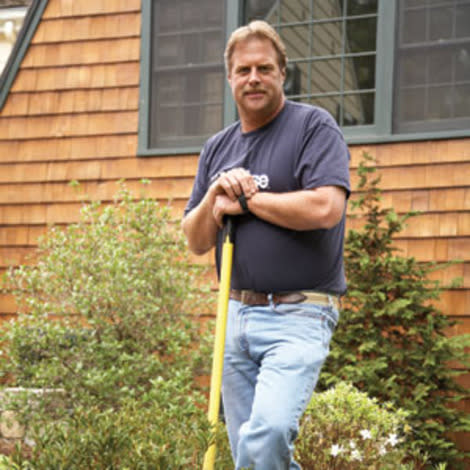What You Should Be Doing in Your Yard This Fall for a Vibrant Landscape Come Spring

"I don't know why people don't do more yard work in September," says This Old House landscape contractor Roger Cook. "Fall is the absolute best time to get things done, and it gives you a head start on spring." For most of the country, autumn's moderate temperatures and plentiful rainfall offer the year's best gardening conditions. What's more, many plants are in a phase of intense root growth, which makes fall a great time to plant, transplant, and feed them. So when the first hint of cool air sweeps through your yard - from late August to early October, depending on your latitude and altitude-here's what you can do to dress up your landscape and lay the groundwork for a lush lawn and beautiful flower beds come spring.
MORE: Get Ready for Fall Planting
Lawns. "To grow a lawn that greens up naturally each spring and that resists drought and disease, you need to foster a strong root system," says Roger. This requires annual maintenance - best done in the fall when weeds aren't likely to sprout.
AERATE: Constant trampling by people, pets, and lawn mowers compacts the soil beneath lawns and prevents air, moisture, and nutrients from penetrating to the roots. If water puddles on top of the turf after a rain, it's time to aerate. For a small lawn, use a garden fork to punch holes in the soil every few inches. To treat a larger area, rent a walk-behind aerator at your local garden center. (You can save money by splitting the rental costs with a neighbor.) These gas-powered machines have hollow teeth mounted underneath that pierce the turf and pull up small plugs of earth as they roll along. To protect sprinkler heads, be sure to mark and avoid them. Afterward, use a flat shovel to flick a light coating of a sand-and-compost mix over the turf; it will settle into the holes and help improve drainage further.
For more lawn how-to, see Roger's Fall Landscaping Checklist
Trees and Shrubs. Cooler temperatures are perfect for planting or trans-planting large specimens because roots settle in without getting parched. Fall is also an ideal time for pruning some of the trees and shrubs in your yard.
PLANT AND TRANSPLANT: "Like grass, most trees and shrubs stop producing leaves by the end of summer and instead direct their energy toward developing roots," says Roger. So specimens planted in the fall begin establishing themselves as soon as they"re in the ground. Plus, autumn"s moderate temperatures and moisture levels won"t harm roots temporarily residing in burlap or plastic pots. Complete all planting, particularly where the snow flies, by the middle of October. Later in the fall, you can protect new evergreen plantings from their first dry, cold season by coating the leaves with an anti-desiccant spray, a waxy coating that limits evaporation and locks in moisture. (Such sprays can be harmful to some plants, including arborvitae and blue spruce; check the product label for a list of recommended applications.) If wind or heavy snow is a problem, wrap small trees and shrubs in several layers of burlap or shelter them under a simple plywood lean-to.
For more tree and shrub how-to, see Roger's Fall Landscaping Checklist
More from thisoldhouse.com
10 Best Trees & Shrubs for Fall Foliage
Fall Furnace Maintenance
Save Money This Season With a DIY Energy Audit
